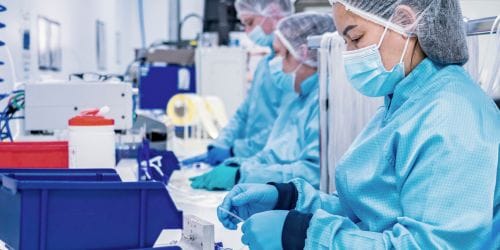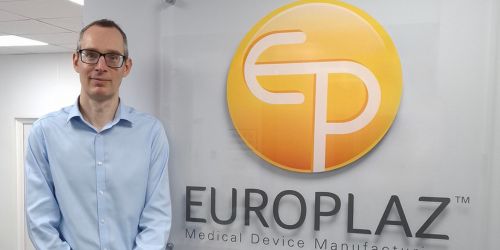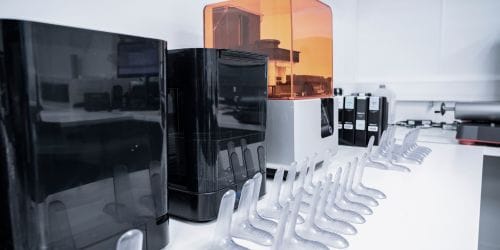ISO 10993-1 is a crucial standard that outlines the general principles for evaluating the biocompatibility of medical devices.
Biocompatibility refers to the ability of a material or device to perform its intended function without causing unacceptable adverse reactions in the biological system in which it is used.
What is ISO 10993?
ISO 10993 is a series of international standards developed by the International Organisation for Standardisation (ISO) that provide guidelines for evaluating the biological safety of medical devices. These standards are intended to ensure that medical devices are safe for their intended use and do not cause harm to patients or users.
The ISO 10993 series consists of several parts, each focusing on different aspects of biocompatibility evaluation. For this blog we will focus on ISO 10993-1.
ISO 10993-1 provides general guidance on the biological evaluation of medical devices. It outlines the principles and methods for assessing the biological safety of medical devices, including considerations such as risk management, testing methods, and documentation requirements.
Why is Biocompatibility Testing Important?
Biocompatibility testing is essential for several reasons, primarily revolving around ensuring the safety and efficacy of medical devices. Here are some key reasons why biocompatibility testing is important:
Patient Safety: Biocompatibility testing helps identify potential risks associated with medical devices, such as toxicity, irritation, sensitisation, and allergic reactions. By assessing these risks, manufacturers can take appropriate measures to minimise the likelihood of harm to patients.
Regulatory Compliance: Regulatory authorities, such as the FDA in the United States and the European Medicines Agency (EMA) in the EU, require biocompatibility testing as part of the approval process for medical devices. Compliance with biocompatibility standards, such as ISO 10993, is often a regulatory requirement for market approval.
Product Development: Biocompatibility testing provides critical data during the product development process, enabling manufacturers to assess the safety of materials, design features, and manufacturing processes. This information helps in designing and producing high-quality, safe medical devices.
Risk Management: Biocompatibility testing helps identify potential hazards associated with medical devices, such as leachables, extractables, and degradation products. By understanding these risks, manufacturers can implement risk management strategies to mitigate or eliminate them.
Market Acceptance: Demonstrating compliance with biocompatibility standards and conducting thorough testing can enhance the reputation of medical device manufacturers. It instils confidence in healthcare professionals, regulatory authorities, and patients regarding the safety and reliability of the products.
Post-Market Surveillance: Biocompatibility testing is not limited to pre-market evaluation; it also includes post-market surveillance to monitor the ongoing safety and performance of medical devices. This helps identify and address any potential issues that may arise after the product is in use.
Legal Liability: Failure to conduct adequate biocompatibility testing can lead to legal liabilities for manufacturers if patients experience adverse reactions or harm due to the use of medical devices. Comprehensive testing helps mitigate these risks and protects against potential lawsuits.
Global Trade: Compliance with internationally recognised biocompatibility standards, such as ISO 10993, facilitates international trade by ensuring consistency in safety requirements across different markets. This simplifies the process of obtaining regulatory approvals in multiple jurisdictions.
Ensuring Biocompatibility
Here’s a breakdown of key aspects and steps involved in ensuring biocompatibility according to ISO 10993-1:
- Scope and Purpose:
– Scope: ISO 10993-1 covers the evaluation of the biological safety of medical devices.
– Purpose: To provide guidance on the assessment of the potential adverse effects of medical devices on living tissues.
- Risk Management:
– Identify Potential Risks: Manufacturers must identify potential biological risks associated with the use of their medical devices.
– Assessment: Evaluate these risks based on device characteristics, duration and nature of body contact, and intended use.
- Biological Evaluation Plan (BEP):
– BEP Development: Manufacturers must develop a Biological Evaluation Plan outlining the testing strategy based on device materials, manufacturing processes, and clinical use.
– Testing Requirements: Determine which biocompatibility tests are necessary based on device type, duration of contact, and patient population.
- Testing Methods:
– In Vitro Testing: Assess biocompatibility using cell culture studies, cytotoxicity assays, and other in vitro methods.
– In Vivo Testing: Conduct animal studies to evaluate systemic toxicity, irritation, sensitisation, and other biological responses.
– Chemical Characterisation: Analyse materials for potential leachables, extractables, and degradation products.
- Evaluation Criteria:
– Acceptance Criteria: Define acceptable levels of biological response based on the type and intended use of the device.
– Thresholds: Establish thresholds for toxicity, irritation, sensitisation, and other adverse effects.
- Risk Assessment:
– Hazard Identification: Identify potential hazards associated with device materials, design, and use.
– Risk Analysis: Assess the likelihood and severity of adverse events occurring due to these hazards.
– Risk Control: Implement measures to mitigate identified risks, such as material selection, design modifications, or protective coatings.
- Documentation and Reporting:
– Biological Evaluation Report: Compile all data, test results, and analyses into a comprehensive Biological Evaluation Report.
– Regulatory Compliance: Ensure that the evaluation process meets regulatory requirements in relevant jurisdictions.
- Post-Market Surveillance:
– Monitoring: Continuously monitor the performance and safety of medical devices in clinical use.
– Adverse Event Reporting: Promptly report any adverse events or unexpected biological reactions to regulatory authorities.
- Continuous Improvement:
– Feedback Loop: Use post-market data and feedback to improve device design, materials, and biocompatibility testing strategies.
– Risk Management Updates: Update risk assessments and biocompatibility evaluations as new information becomes available.
ISO 10993-1 provides a systematic approach to ensuring the biocompatibility of medical devices, from risk assessment and testing to documentation and post-market surveillance. By following the guidelines outlined in this standard, manufacturers can demonstrate the safety and effectiveness of their devices for clinical use, thereby protecting patient health and well-being.
Europlaz’s Commitment to Biocompatibility
As a trusted medical device manufacturer, we prioritise the safety and well-being of patients above all else. Our ISO 10993 Medical Device Biocompatibility services are designed to uphold the highest standards of quality and compliance. We work closely with our clients to navigate the complexities of biocompatibility testing and ensure that their products meet regulatory requirements and industry best practices.
By partnering with us for biocompatibility testing, medical device manufacturers can have confidence in the safety and performance of their products, ultimately contributing to improved patient outcomes and enhanced healthcare delivery.
In conclusion, ISO 10993 plays a crucial role in the development and evaluation of medical devices, particularly in ensuring their compatibility with the human body. By adhering to these standards and conducting comprehensive biocompatibility testing, medical device manufacturers can demonstrate their commitment to patient safety and regulatory compliance.
For more information please contact us today.





